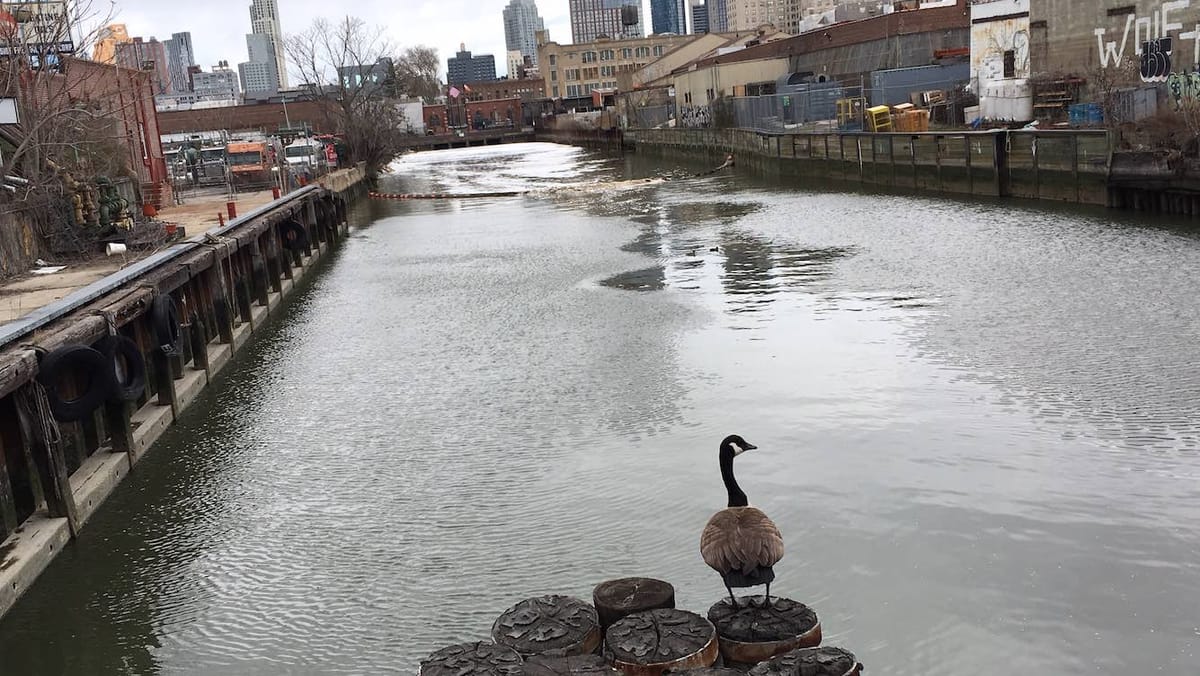Queens Company Fined For Dumping Sewage Into The Gowanus Canal


Despite the intense focus of recent years on cleaning up the Gowanus Canal, polluters still try to dump there illegally.
As first reported by DNAInfo, a Queens-based company, A&L Cesspool, pled guilty yesterday at the Brooklyn federal courthouse to felony Clean Water Act violations, which include dumping sewage waste into manholes flowing directly into the Gowanus Canal. Federal prosecutors say that A&L is one of the largest cesspool service providers in New York City, clearing blocked sewer lines by pumping and removing waste.
A&L was illegally dumping sewage waste that it had removed, prosecutors said. The company had a permit from the City’s Department of Environmental Protection to dump liquid waste at certain wastewater treatment plants so pollutants could be removed first; but instead simply released the waste into outflow pipes underground.
“Circumventing procedures to properly dispose of pollutants is a serious crime, and those who engage in this type of activity won’t get away with it,” said FBI Assistant Director-in-Charge William F. Sweeney, Jr. in a statement. “Environmental laws, such as those violated by A&L Cesspool, are put in place to protect us from grossly negligent practices that threaten the cleanliness of our communities and put the public’s health at risk.”
A&L will pay $900,000 in criminal fines and has been sentenced to two year’s probation. The company also “repeatedly dumped liquid waste at other locations,” including manholes at a Brooklyn NYCHA development, John F. Kennedy International Airport and Fort Wadsworth on Staten Island.
A&L’s penalties include a $175,000 community service payment to the National Fish and Wildlife Foundation to be used toward projects “in or directly benefiting the Gowanus area.”
The guilty plea and sentence were announced by Robert L. Capers, U.S. Attorney for the Eastern District of New York, along with representatives of the Federal Bureau of Investigation (New York Field Office), and the U.S. Environmental Protection Agency (EPA).
“Today’s…plea and sentence demonstrate that polluters face serious consequences for violating the Clean Water Act,” Capers said. “The Department of Justice is committed to prosecuting businesses who ignore their obligation to keep our waterways clean.”
Under the Act, it is a crime for anyone to knowingly dump pollutants into a U.S. waterway without a permit or in violation of a permit.
There is a certain irony to yesterday’s conviction as the City of New York has been engaged in negotiations with both the State of New York and the U.S. EPA for years about its raw sewage releases into the Gowanus Canal and other area waterways.
Environmental groups charge that between 20 and 30 billion gallons of raw sewage and polluted stormwater are discharged annually from over four-hundred New York City combined sewage overflows (CSOs) into local water bodies, including the Gowanus.
Raw sewage releases into the Gowanus – which occur when area mains become overwhelmed by rainwater — have been documented repeatedly.
In June, 2016, the EPA reached an agreement with the City which finalized the design of the larger of two combined sewage and storm water overflow retention tanks. (The larger tank will hold approximately 8 million gallons of liquid waste, the EPA says.) Construction of the two tanks is an important part of the EPA’s final cleanup plan for the Gowanus Canal Superfund site, which was issued in September, 2013.
The plan seeks to “significantly reduce CSO discharges from two key locations in the upper portion of the canal,” the EPA said in a statement. “These discharges are not being addressed by current New York City upgrades to the sewer system. Without these controls, CSO discharges would re-contaminate the canal after its cleanup.”
The EPA’s cleanup plan for the Gowanus also includes dredging contaminated sediment that has accumulated on the bottom of the canal as a result of industrial and sewer discharges. The dredged areas will then be capped, the EPA says.



